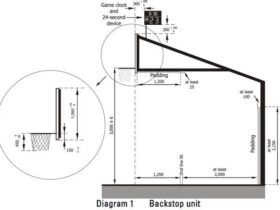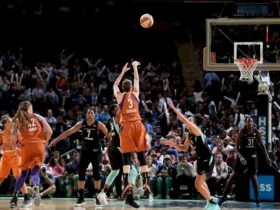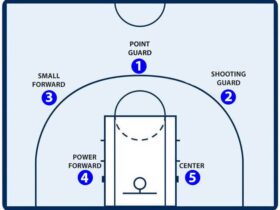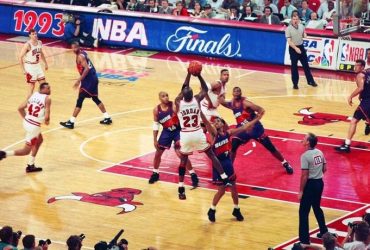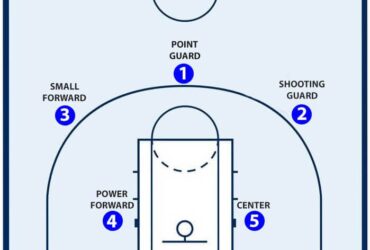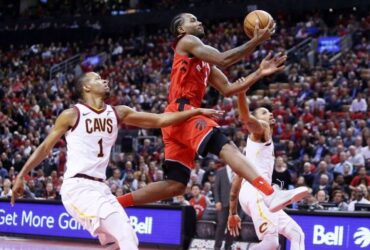Types of sports that require team formation, such as basketball, require good cooperation to bring the team to victory. In addition to cohesiveness, responsiveness between teams is also a determinant of success in basketball. For example, when a basketball pass to the ring fails, the responsiveness of a friend in a team, such as a basketball rebound technique, is very beneficial.
What kind of rebounding technique is meant so that you can shake the opposing team and take advantage of your fellow team?
Get to Know More about Basketball Rebound Techniques
The rebound technique can be defined as one of the ways and tricks in playing basketball where a player on a team catches the ball that fails to enter the ring and bounces out of the ring. The position to do the rebound technique is in the middle position or center and power forward.
Because players who do rebounds must be agile and can immediately catch basketballs that fail to reach goals, generally this position is given to players who are big and tall. Even so, the opportunity to make a rebound including catching and dribbling the ball still applies to all players.
Type of Rebound Technique
If dissected more deeply, the basketball rebound technique consists of two types that differ in the area of operation. In practice, the two types of rebounding techniques have different movement priorities. The difference between offensive rebound and defensive rebound can be seen as follows:
Offensive Rebound
Offensive rebounds can be interpreted as a way to maintain possession and second-chance points from a failed basketball shooting movement into the ring by a player in one team. Rebound balls that are considered offensive rebounds can come from jump shots and layup patterns.ca
In terms of the area of operation, offensive rebounds are carried out in the opponent’s paint area or even at a longer distance. Because being in this area is also what causes offensive rebounds to be more difficult to get because they have to face the opponent’s obstacles.
When the players in the team are very clever in playing their abilities in this technique, they will be able to extend the possession so that the team can end the possession with a score.
Doing offensive rebounds requires reading the right shooting direction. Will the ball be shot from the wing, corner, top of the key, or midrange? Doing box-outs can also maintain a standing position for rebounds.
The chances of success from rebounding can also be increased when you make an early jump. Because left behind even in an instant it is very easy to make the ball already in the hands of the opponent.
Defensive rebound
If the offensive rebound is done by taking over the ball from the opponent, the defensive rebound is the moment to catch the reflection of the ball that the opponent failed to throw. This means that the operating area is in your paint area.
Because the concept and area of operation possessed by defensive rebounds are what makes this type of basketball rebound more often used because it is close to the basketball hoop than opposing players.
The success of the defensive type of rebound technique is judged when the seizure of the ball that soars in the air from the opposing player can be done. Then the defender or libero must block an upcoming rebound. Because when the defensive player is off guard, the ball will be very easy to move to the opposing team.
Almost similar to offensive rebounds, early anticipation using the box-out method must also be used before taking defensive rebound steps. By using the box out, players also communicate to form a solid defense.
Terms in the Rebound Technique
One of the terms in the rebound technique has been discussed previously, namely box out. What is the definition of this box and why is it being used so often. In addition, other terms in rebound techniques are also very diverse in form.
Box Out
Box out is a basic technique, including rebounding, which is used to keep the opponent away from the direction of the incoming ball so that the offensive rebound by the box out actor is successful. When using the box out technique in rebounding, players must work as a blocker by spreading their arms.
As the first anticipatory technique to maintain possession or seize possession from the opponent, the player must immediately box out. This is because the allotment of time a player is said to have not violated the rules for possession is when it does not exceed 24 seconds to hold the ball.
Each possession should end with the addition of points for the team. If accumulated, within 48 minutes of matches or 4 sessions, each team should ideally be able to make 100 possessions.
Putback
When the offensive rebound technique is done without dribbling basketball replay or directly shooting wild balls in the opponent’s defense area, then the technique is said to be put back. Because they don’t warm up like dribbles first, it’s not surprising that putbacks are made briefly by players from an unpredictable side.
Putback itself is divided into slam or drunk putback and layup putback. The type of putback that is often used by basketball athletes is the slam putback, this is because the rebound technique is often used by players who are tall and have a good physique.
Tips In
Similar to putbacks, the difference in tip-in lies in not having possession of the ball. So that players who tip in only help the ball that bounces or bounces to enter the basketball hoop using their fingers.
This tip is done when the first shooting attempt fails. So if a put-back is a form of an offensive rebound, then a tip-in is a true second chance.
Steps to Rebound
Theories and terms in rebound techniques have at least been explained in detail in the previous discussion. Like other basic techniques in the game of basketball, knowledge, and practice of rebound techniques needs to be done.
As a reminder, rebounding techniques are very open to both opposing sides and all player positions on the team. It is because of this openness that the rebound technique in the field often uses physical competition, none other than to block each other and fight for the bouncing ball.
The steps in performing the rebound technique include the following:
- A rebound ball is a ball that bounces back when it doesn’t make it into the ring because it’s its nature that requires you to prepare your body to jump as high as possible.
- Focus on the basketball player holding the ball for shooting or putting the ball into the basketball hoop.
- When the player who is shooting fails, then prepare to box out and physically compete with the opposing team.
- As soon as possible do a high jump with your hands raised to grab the rebound ball
- While in the air, try to keep your body straight and don’t bend over
- Once you have the rebound ball, make a steady landing.
The steps above can be readjusted while you are in the field area. If the rebound ball is a defensive rebound, it means that the ball failed to be shot by the opposing player. Then the security of the rebound ball can be done in the chest or stomach area. Players can also pass directly to players in a team to counterattack.
However, if the type of rebound ball is an offensive rebound or it results from a failed shooting of players in a team, then it is also possible to shoot directly into the opponent’s ring. Once again, keep in mind that in rebounding, strengthen the box out a technique to form a defensive formation.
Tips for Practicing Rebound Techniques
Victory in the basketball team game, especially in getting a rebound ball, is strongly influenced by the formation of the player’s position when fighting for the ball. To support success in playing rebound techniques, some tips that you can use are as follows.
Player Position
When shooting into the opposing player’s basketball ring area, the placement of the players’ positions in one team must be considered to make it easier to receive the ball’s reflection later. For that, pay attention to your teammates, the placement of formations must be given a distance to make movements on the field.
The placement of this position requires high team coordination and good cooperation so that the team does not individualize each other. This is because the rebound technique is very open and all players can have the opportunity to rebound. That way, providing space for players in a team is very necessary.
If when the ball fails to enter the ring and the condition is that none of the players on the same team are near the ring, then you can breakthrough. In addition to position, communication when making a rebound must continue to be done. This communication is for example in the form of shouting “shoot” when you get an offensive rebound and shouting “keep” or “passing” if you get a defensive rebound.
Body Condition
Prepare your body to jump and box out when you’re not a shooter. This body preparation can be done by positioning the body rather low and bending the knees slightly. By doing this movement, jumping in the air to get the basketball will have a greater chance. The condition of the body ready to box out is an obligation when doing the rebound technique. The trick is to crouch to block the movement of opposing players. Obstacles are also allowed to use the legs by stretching them apart or standing as wide as possible. Sticking the body to push l


